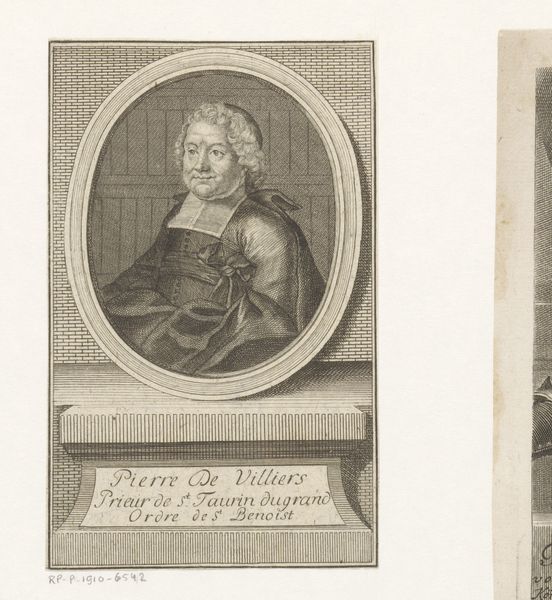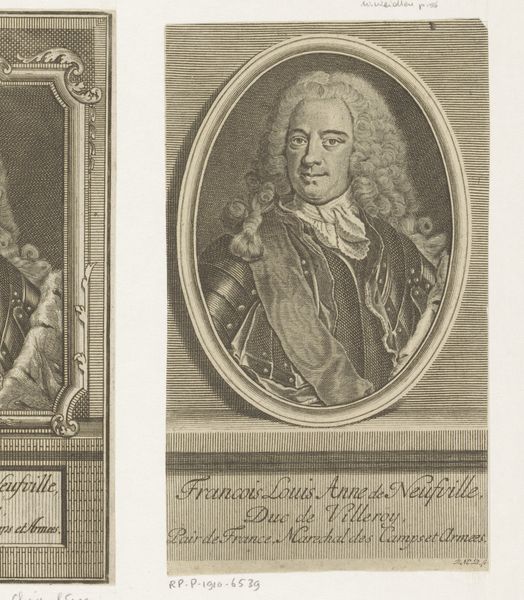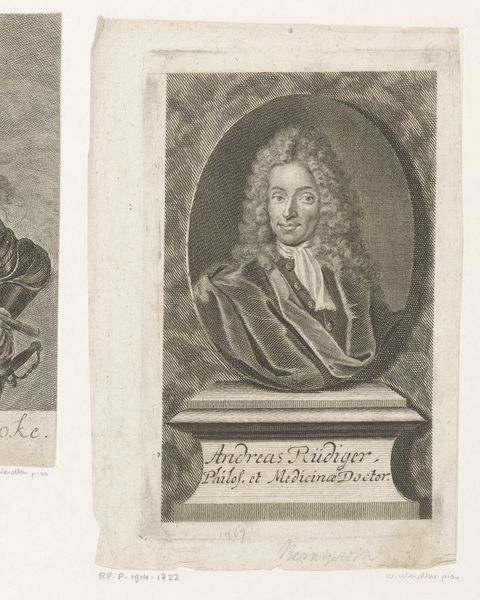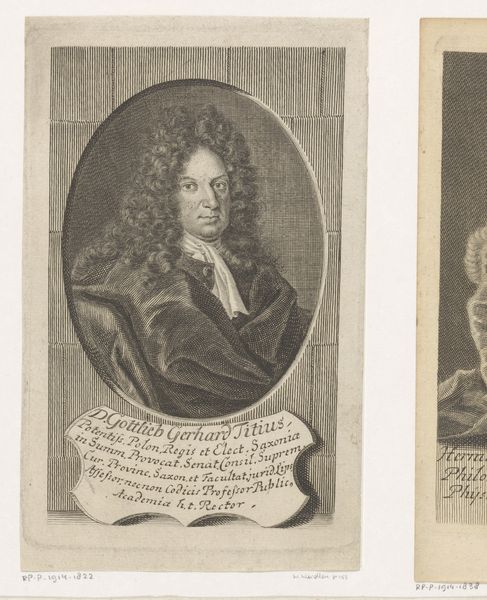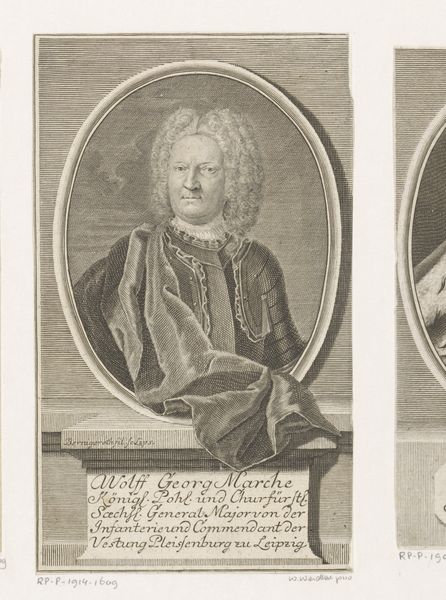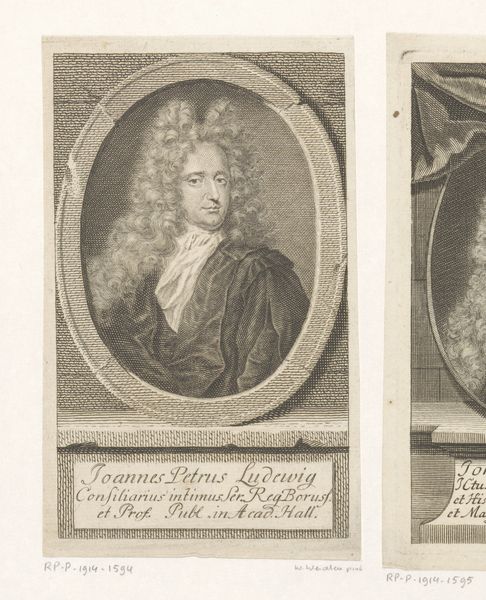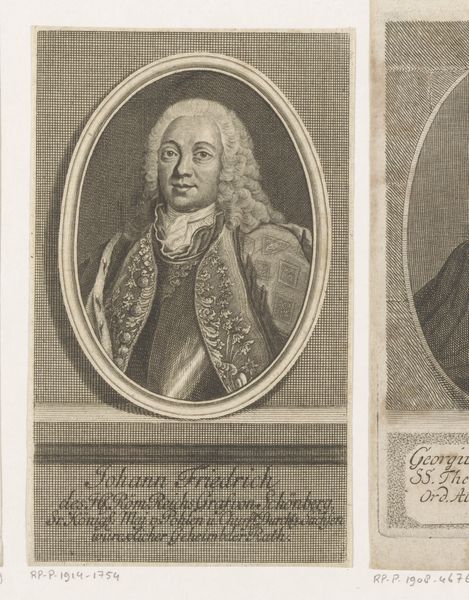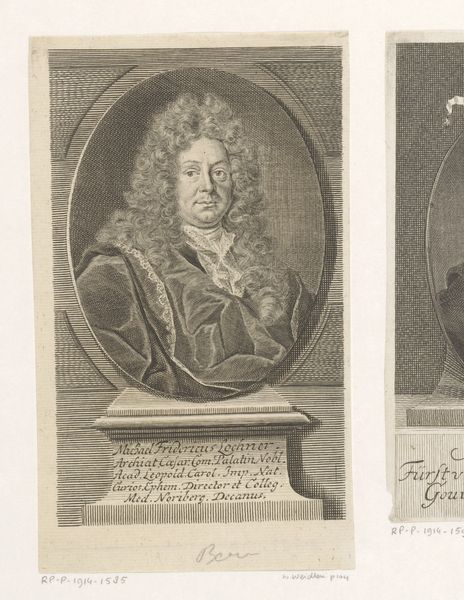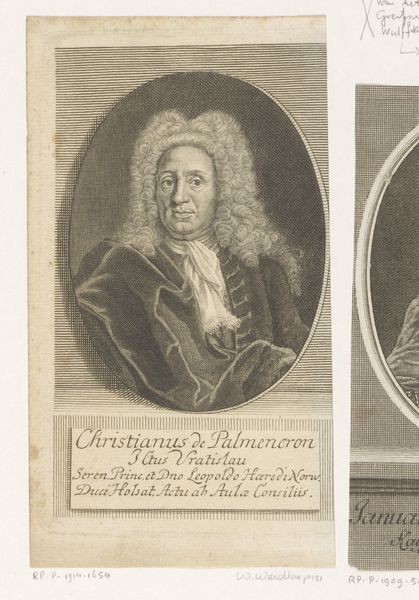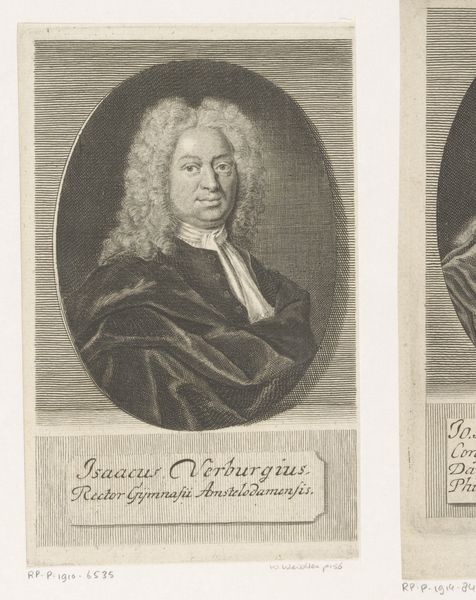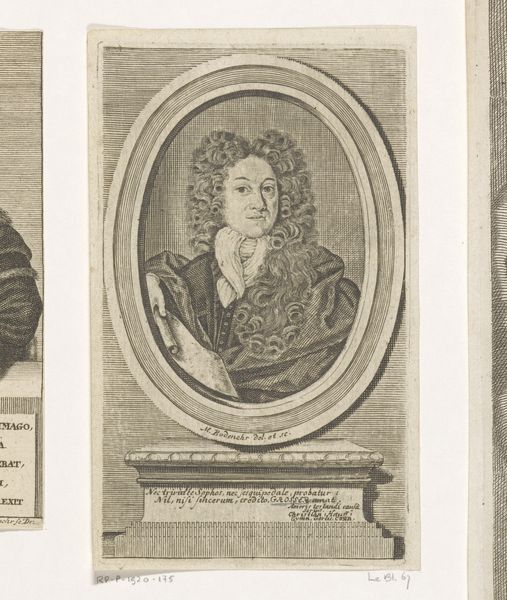
print, paper, engraving
#
portrait
#
baroque
# print
#
old engraving style
#
paper
#
history-painting
#
engraving
Dimensions: height 151 mm, width 95 mm
Copyright: Rijks Museum: Open Domain
Editor: We're looking at "Portret van Charles Rollin," an engraving from 1741 by Johann Martin Bernigeroth, housed in the Rijksmuseum. I’m struck by the formality of it – the pose, the wig, everything feels so deliberate. What do you see in this piece, beyond just a portrait? Curator: I see a carefully constructed image intended for a specific public. The portrait is an act of social representation. Consider Rollin’s profession as a professor of eloquence; this print served to solidify his intellectual authority and perpetuate his image amongst the academic and social elites. How do you think the act of disseminating his image via a print enhances this aim? Editor: I guess having multiple copies would spread his influence more widely than a painting. It's a form of public relations, almost like early social media for academics. But wouldn't a painting be seen as more prestigious? Curator: Precisely. The choice of a print – an engraving – signifies a calculated democratization of Rollin's image. While painting held higher status, prints allowed for wider circulation among the literate public, contributing to the Enlightenment ideal of accessible knowledge and bolstering Rollin's reputation across a larger network. Consider where prints were displayed - libraries, universities, private collections. These spaces cemented his legacy. Editor: So, it’s not just about the individual, but how the image functions within a specific cultural landscape. I hadn't considered the democratizing power of printmaking in shaping public perception. Thank you for the enlightenment. Curator: It’s been my pleasure to share my perspective. It’s important to remember that portraits, regardless of medium, are always constructed, and serve as documents reflecting both the sitter's status and the societal values of their time.
Comments
No comments
Be the first to comment and join the conversation on the ultimate creative platform.
